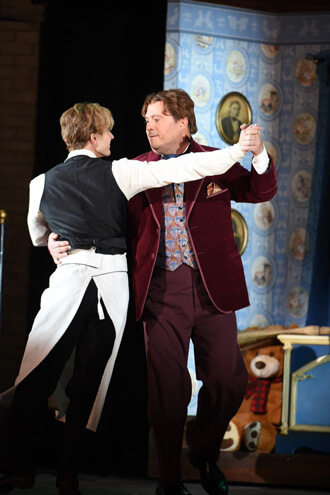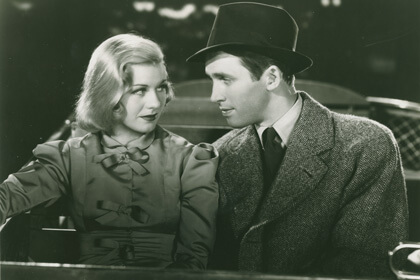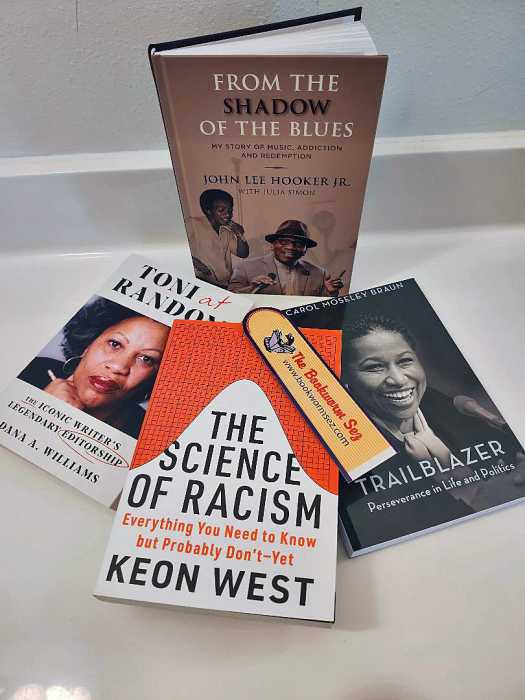BELKNAP/ HARVARD UNIVERSITY PRESS
Oscar Wilde was only 27 when he undertook an 1882 lecture tour of the US and Canada, and a new book from Harvard University Press’s Belknap Press — “Declaring His Genius: Oscar Wilde in North America” by Roy Morris Jr. — rates his trip “a remarkable feat of physical and emotional endurance.”
By the end of this tour, Wilde “had traveled some 15,000 miles, had appeared in 140 cities and towns from Maine to California… earning, after expenses, $5,600 — in modern terms, nearly $124,000.” In his wake, as Morris relates, “many” local arts schools, crafts centers, and sculpting studios sprang up, and “untold artists, male and female, took personal inspiration from Wilde’s message and his example.”
The value of Morris’ book is that it paints in great detail how Wilde’s American tour was “a complex media event, perhaps the most extensive of his time. Wilde functioned in essence as his own advance man, beating the drum for his upcoming lectures while carefully nurturing a more elevated image as the leading spokesman for the Aesthetic Movement, which he airily described as ‘the science of the beautiful.’”
Wilde at this point had published only one book of poetry and some articles, but he had already “become increasingly famous, although no one could quite say why.” At Magdalen College, Oxford, where he won the school’s prestigious Newdigate Prize for poetry, his bon mots became famous and even entered the popular language of the educated classes – like his observation that “everything and every one was ‘too too utterly utter’ for words.”
Thanks in part to the frequent caricatures of him by the cartoonist George Du Maurier in the humor magazine Punch, he was so famous that even the prince of Wales — the future King Edward VII — asked for an introduction, observing that “I do not know Mr. Wilde, and not to know Mr. Wilde is not to be known.” Wilde had become “the most talked about dandy since Beau Brummell,” and he “played his part perfectly, dressing in crushed-velvet coat, satin knee breeches, black silk stockings, and pale green necktie, with a giant yellow-and-brown sunflower pinned to his lapel.” The Aesthetes, who were decidedly more democratic than the art school-based pre-Raphaelites like Walter Pater (with whom Wilde had studied at Oxford), adopted the British craze for Japanese fashions — memorialized by Gilbert and Sullivan in “The Mikado” — and the lily, which imported from Japan in 1862, was adopted by Wilde as an early trademark.
New history of famed North American tour misses the essential queer subtext
Wilde knew and corresponded with W.S. Gilbert, who made him the target of the successful Gilbert and Sullivan comic operetta “Patience, or Bunthorne’s Bride.” He was instantly recognizable to British audiences as the poet Bunthorne, the “foppish young faker who walked down Piccadilly with a poppy or a lily in his medieval hand.”
Far from being embarrassed by the mockeries of “Patience,” Wilde “embraced the Bunthorne character wholeheartedly, attending a performance of the show in full costume and breezily acknowledging the cheers and gibes of fellow theatergoers with a wave and a bow. ‘The only thing worse than being talked about,’ he said, ‘was not being talked about.’”
But when “Patience” opened in America in 1881, “its canny producer, Richard D’Oyly Carte, known as ‘Oily’ for his slippery business sense, saw an opportunity to gain additional publicity by bringing over [to the States] the living, breathing embodiment of Reginald Bunthorne.” Because Wilde’s extravagances left him continually strapped for money, he accepted Carte’s proposal for an American lecture tour.
Even before he stepped off the steamship Arizona, while it was still held in quarantine at anchor in New York harbor, the flood of newspaper coverage of Wilde’s American adventure began. It accompanied him wherever he went. The title of Morris’ book comes from Wilde’s reported declaration on his arrival to a customs official: “I have nothing to declare but my genius.”
Many of Wilde’s press clips were collected in the 2010 book “Oscar Wilde in America: The Interviews,” edited by Matthew Hofer and Gary Scharnhorst (University of Illinois Press), on which Morris’ new book relies quite heavily and where much of the detail and the Wildean quips cited by him were previously published.
When Wilde spoke to a sold-out crowd in Boston’s Music Hall, he had to delay appearing on stage when an unruly group of 60 Harvard undergraduates “marched down the center aisle in pairs, all carrying sunflowers and wearing Wildean costumes of knee breeches, black stockings, wide-spreading cravats, and shoulder-length wigs.” But Wilde’s witty speech turned the tables on the students, whom he won over when he declared that “he did not see why a prospective graduate couldn’t receive a Harvard diploma for painting a picture or sculpting a beautiful statue as much as for completing a course in ‘that dreadful record of crime known as history.’” The city’s paper of record, the Boston Evening Transcript, recounted, “Mr. Wilde achieved a real triumph, and it was by right of conquest, by force of being a gentleman, in the truest sense of the word,” producing “a thorough-going chastening of the super-abounding spirits of the Harvard freshmen.”
A similarly costumed bunch of Yale students greeted Wilde’s lecture in New Haven, and when some hundred college boys from the Baptist-run University of Rochester disrupted Wilde’s talk in that city with “a running fire of hisses, groans, and hootings… so noisy” that the Aesthete’s voice could not be heard, the Rochester Union and Advertiser ran an editorial headlined “Rochester’s Deep Disgrace” berating the students’ actions as “the height of boorishness.”
A good deal of the newspaper coverage of Wilde, however, was negative, sneering, and what we would now call “homophobic” (a word Morris does not employ). The Washington Post ran a cartoon comparing Wilde to the Wild Man of Borneo (a midget attraction of P.T. Barnum’s circus) and characterized Wilde’s supporters as “young men painting their faces… with unmistakable rouge about their cheeks.” And the Brooklyn Eagle harrumphed, “The pallid and lank young man, Mr. Wilde, will find in the great metropolis… a school of gilded youths eager to embrace his peculiar tenets.” The prestigious Harper’s Weekly ran a nasty front-page cartoon brutally sketching Wilde as an “aesthetic monkey” complete with sunflower and lily. (“Declaring His Genus” includes reproductions of a number of the more vicious cartoons Wilde endured.)
“Some of the men in Wilde’s audience quite likely were gay, as newspaper reports insinuated at the time,” Morris writes. “‘Many aesthetic and pallid young men in dress suits and banged hair’ (i.e. bangs) were to be seen lounging in the rear of the theater when Wilde spoke for the first time in New York, one observer wrote. ‘Banged hair’ was a dead giveaway to readers, as was the suggestion that the men were somehow furtively loitering in the back of the room. Frequent allusions in the national press to Wilde’s ‘effeminate’ voice and mannerisms linked him to his purportedly gay audience.”
Sadly, this is one of only three quite cursory references to homosexuality in “Declaring His Genius.” And while there is much here that is of interest to those of us who admire Wilde, it saddens me to have to report that this is a seriously flawed book.
Morris writes — if I may be permitted a vulgarity — like a breeder; a biographical note about the author boasts of his wife and children and he is identified as the editor of a publication called Military Heritage. He claims “it was not as a proselytizer of outlaw sexuality that Wilde presented himself to the American public, but as a spokesman for an art and beauty, in whatever exotic or commonplace forms they could be found in people’s lives. The rest was not necessarily his business.” The military buff, perhaps, continues to put too much stock in the concept of Don’t Ask, Don’t Tell.
Morris’ erroneous interpretation of Wilde is only possible because he completely ignores the meticulously researched findings of Neil McKenna’s superb investigative biography “The Secret Life of Oscar Wilde,” which appeared to universal acclaim when first published in England in 2003 and hailed with equal praise when Basic Books came out with it here in the US in 2005. (See my August 25-31, 2005 review “Wilder Than We Knew.”)
McKenna’s essential work appears nowhere in the footnotes to Morris’ book. Using previously untapped diaries, letters, and other documents, McKenna demonstrated beyond dispute that by the late 1870s, Wilde was already preoccupied with the philosophy of same-sex love. He befriended and spent considerable time with the poet and writer John Addington Symonds, who helped found several Walt Whitman Societies in the north of England — the first recorded groups of gay men in that country founded specifically to discuss homosexuality — and wrote the pro-homosexual “A Problem in Greek Ethics” (1883).Wilde began a cautious friendship with the homosexual essayist and critic Walter Pater — who had written in coded language of the love of boys — but found him “too hesitant, too secretive about his sexual tastes.” And he became familiar with the writings of gay liberationist pioneer Karl Heinrich Ulrichs, a German lawyer who from the 1860s on published dozens of books and pamphlets proclaiming that homosexuals were natural and normal, deserving of full social and legal equality, including the right to marry. Wilde embraced both Ulrichs’ philosophy and his use of the term “Uranian love” (from the Greek urianos, or “heavenly love”) in describing homosexuality. In letters, Wilde and his friends began to refer to the campaign for legalization of homosexuality as “the Cause,” and he joined a secret Uranian organization, the Order of Chaeronea, to fight for it.
Morris’ failure to consult McKenna’s groundbreaking research is particularly glaring in the account of the meeting between Wilde and Whitman at Whitman’s Camden, New Jersey home. McKenna makes it quite clear that one of Wilde’s most important priorities in coming to America was a meeting with Whitman. Wilde’s friend Symonds had engaged in a long correspondence with Whitman, trying to draw out of him an explicit declaration of his sexual tastes, so ill-concealed in his beautifully homosensual poems about passionate male bonding. Whitman had remained evasive.
But after his meeting with Whitman — then in his 60s, with a flowing, white beard — Wilde wrote there was “no doubt” about the great American poet’s sexual orientation: “I have the kiss of Walt Whitman still on my lips.”
Not a word of this appears in “Declaring His Genius.” Morris relies heavily on Richard Ellman’s Pulitzer Prize-winning 1988 biography “Oscar Wilde,” which is in many ways admirable. Ellman dates Wilde’s first experience of same-sex love to his 1885 seduction by Robbie Ross, a young friend who later became his literary executor.
But on a number of points Ellman’s research has been surpassed and superseded by McKenna’s, who shows convincingly, in Wilde’s own words, that what Wilde himself called his “sexual awakening” took place when he was 16 at Portora Royal School. McKenna also documents how Wilde, well before his US tour, lived for several years with a male lover he’d met in 1876 — the society portrait painter Frank Miles. Wilde was introduced to Miles by the sculptor Lord Ronald Gower, “a notorious sodomite, with a penchant for ‘rough trade’,” as McKenna wrote, on whom Wilde “would base the character of Lord Henry Wotton, the corrupting prophet of strange sins” in “The Picture of Dorian Gray.” Wilde’s own sense of his sexual orientation and his political embrace of homosexual liberation, then, predated by some years his American tour.
Equally glaring is Morris’ failure to cite Carolyn Williams’ 2012 book “Gilbert & Sullivan: Gender, Genre, Parody,” which sees Wilde’s adoption of the Bunthornian caricature in “Patience” as “an extravagantly brilliant nose-thumbing at bourgeois respectability.” (See my August 28, 2012 review “How Gilbert and Sullivan Begat the Oscar Wilde Persona.”
Given the amount of space Morris gives to “Patience” and its importance to Wilde’s U.S. tour, his ignorance of Williams’ important work is as stunning as his failure to incorporate McKenna’s revisionist findings.
Morris also paints Wilde as essentially non-political. Yet just a few years after his American tour, Wilde — who proclaimed himself “something of an anarchist” and wrote the libertarian socialist essay “The Soul of Man Under Socialism” — joined the agitation for clemency for the eight Haymarket Martyrs, Chicago anarchists framed and executed for a bomb that exploded in a mass protest in that city for the eight-hour day in 1886. “Declaring His Genius” makes no reference to how Wilde’s American tour might have influenced Wilde in taking sides in the Haymarket furor.
Morris writes well and there is much in his book that will enlighten and entertain. But a queer historian would, it seems to me, have been more sensitive to the centrality of Wilde’s already-developed sexual consciousness. And a more attentive scholar would never have overlooked contributions as important as McKenna’s and Williams’ books. Oscar deserves better than this.
DECLARING HIS GENIUS: OSCAR WILDE IN NORTH AMERICA | By Roy Morris Jr. | Belknap/ Harvard University Press | $26.95 | 264 pages



































